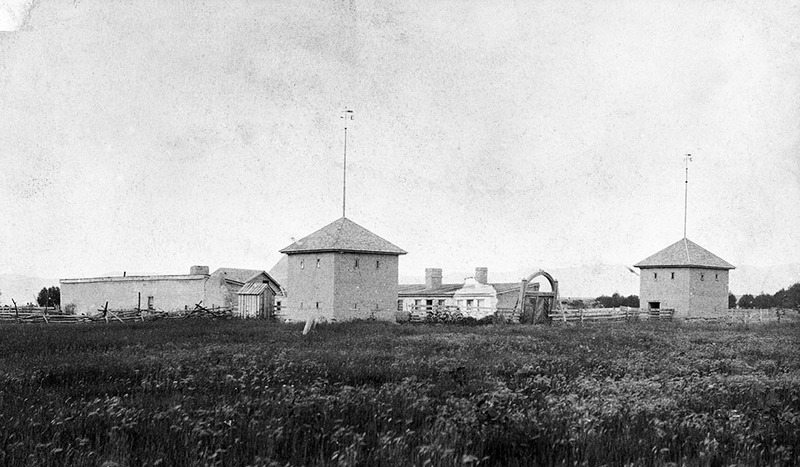Fort Owen State Monument

Fort Owen’s log and adobe walls witnessed dramatic changes as the Bitterroot Valley emerged from remote wilderness to settled agricultural community. The Jesuit fathers who had established St. Mary’s Mission nearby in 1841 closed their doors in 1850, and trader John Owen purchased the property. Owen operated and expanded St. Mary’s mills, cultivated the fields, enlarged the fort, and kept a well-stocked trade room, thereby transforming the mission compound into a vibrant trading post complex. A man of many talents, Owen also served as agent to the Flathead Nation from 1856 to 1862, and for a time the fort was agency headquarters. Owen and his Shoshone wife, Nancy, created a refined and comfortable haven in the vast timberland, extending gracious hospitality to Indians, traders, trappers, missionaries, settlers, and travelers. With the 1860s came gold-seekers and a fresh clientele, but the newly completed Mullan Road bypassed Fort Owen and trading dwindled. Upon Nancy’s death in 1868, Owen’s mental health deteriorated. In 1872, Fort Owen was sold at sheriff’s sale to Washington J. McCormick, who operated the fort’s mills until 1889. In 1937, the Fort Owen site was donated to the State of Montana, and the donors sponsored stabilization and partial reconstruction of its sole remaining building, the East Barracks. Archaeological investigations initiated in 1957 by the University of Montana continued through 1980, exposing the fort’s walls and foundations. Since 1971, the Stevensville Historical Society has been instrumental in interpretive reconstruction, continued stabilization, and maintenance of this noteworthy site.
Images

![[Fort Owen]](https://historicmt.org/files/fullsize/c3da1064f5b43cd168c65bbbf151d06f.jpg)